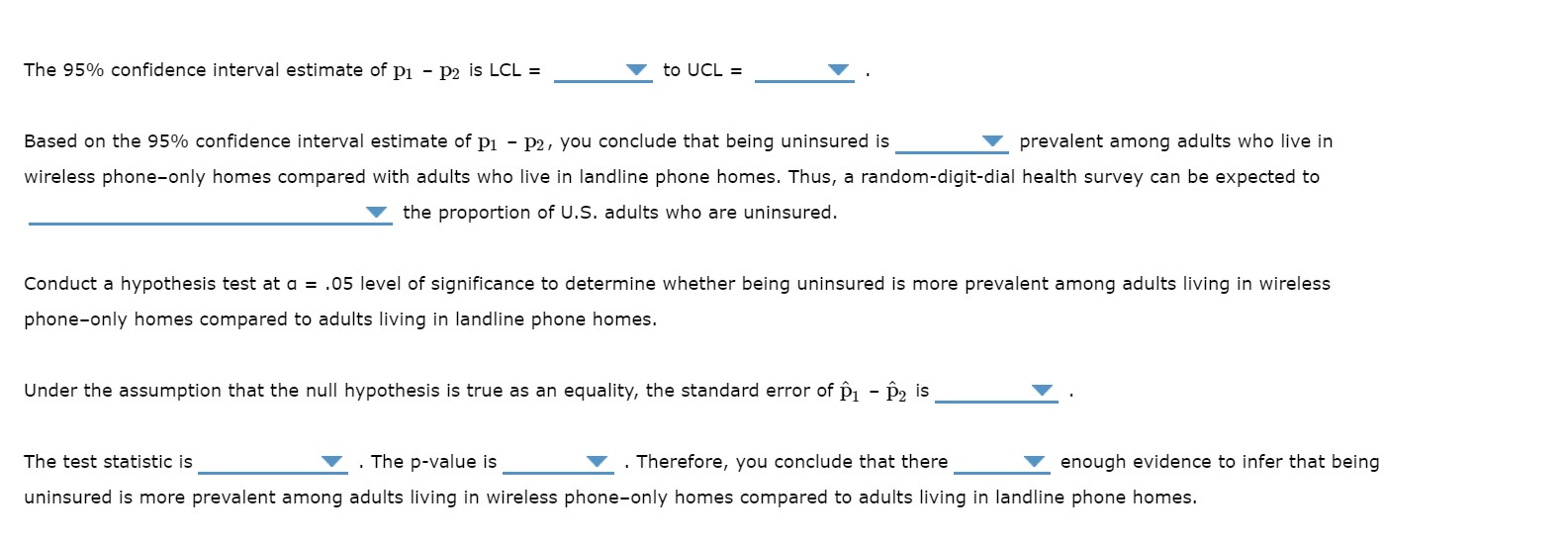please help me answer these questions
3. Inferences about the difference between two population proportions Most major survey research organizations do not include wireless telephone numbers when conducting random-digit-dial telephone surveys. If there are differences between persons with and without landline phones, using a random-digit-dial telephone survey may introduce bias into the survey res u Its . Data on a broad range of health topics are collected through personal household interviews of a representative sample of the (LS. civilian noninstitutionaiized population in the National Health Interview Survey (NHIS). Since respondents are also asked about their telephones, the NHIS data allow you to compare the health insurance status of persons with and without landline phones. Let [)1 denote the proportion of adults living in wireless phoneonly homes who are uninsured and p2 denote the proportion of adults living in landline phone homes who are uninsured. Independent random samples are seiec'ted from the two populations. Sample 1, with sample size 111 = 80, provides a sample proportion [31 = 0.29. Sample 2, with sample size I1; = 150, provides a sample proportion 1'52 = 0.14. (The sample results are representative of the data collected in the NHIS, but the sample sizes are much smaller.) Use the Distributions tool to help you answer the questions that follow. The 95% confidence interval estimate ofpi p2 is LCL = V to UCL = V . Based on the 95% condence interval estimate of 131 p2, you conclude that being uninsured is V prevalent among adults who live in wireless phoneonly homes compared with adults who live in landline phone homes. Thus, a random-digit-dial health survey can be expected to V the proportion of U.S. adults who are uninsured. Conduct a hypothesis test at a = .05 level of signicance to determine whether being uninsured is more prevalent among adults living in wireless phoneonly homes compared to adults living in landline phone homes. Under the assumption that the null hypothesis is true as an equality, the standard error of 131 132 is V . The test statistic is V . The p-value is V . Therefore, you conclude that there V enough evidence to infer that being uninsured is more prevalent among adults living in wireless phoneonly homes compared to adults living in landline phone homes








